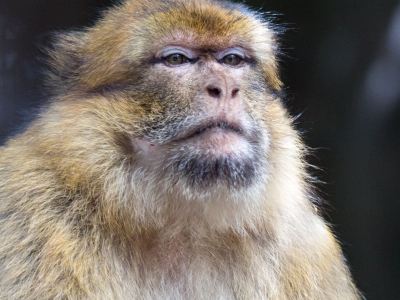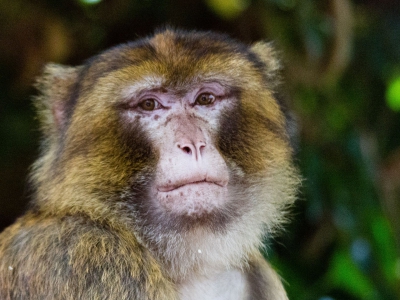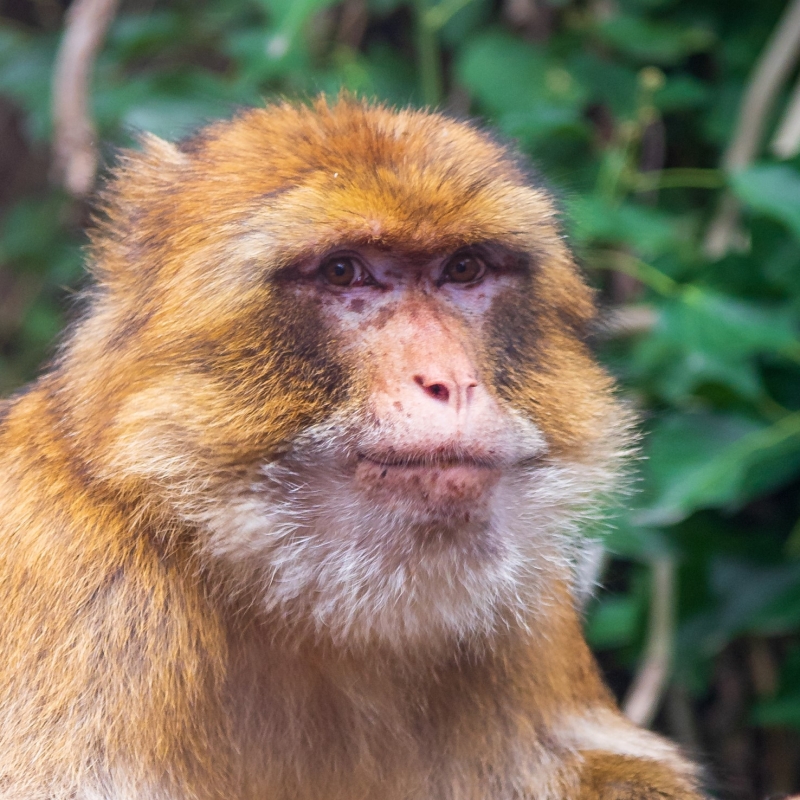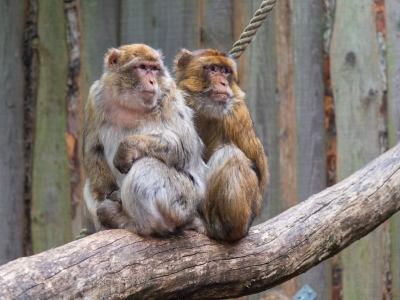Barbary Ape Macaca Sylvanus
Animals in our sanctuary
Fibi

Fibi was bought in Morocco on the market of Marrakech as a very young baby monkey. She was smuggled in via the airport, anaesthetised and completely taped like a sausage. Upon arrival she was given an antidote. Fibi suffered many traumas: the loss of her parents, being taken out of her normal environment, obliged to live as a half human, .... In 2010 the police noticed a woman in the market place with a small Barbary ape in a pram. This monkey, Fibi, was dressed with a pink jacket, a diaper, etc. She was seized and brought to the AAP Foundation. Now Fibi got another Berber family in De Zonnegloed where she can enjoy a beautiful future.
Haddo

Haddo comes from a zoo that was closed by the French government, Zoo de Bouy. The Zoo didn’t provide proper care for the animals and there were several violations related to animal welfare and neglect. Haddo was originally part of a larger group but for some reason he was removed from the group. After the closure Haddo was transferred to the AAP Foundation. Now Haddo has a family again and lives together with his kind in De Zonnegloed.
Cheetah
.jpg)
Cheetah was kept illegally by a woman in an apartment in Antwerp. When the animal escaped from its cage and sat on the balcony, it was noticed by several local residents. A slight panic broke out and the police were notified. Upon investigation, it was found that the woman had no official papers for the animal, something she was aware of herself, as she quickly moved the animal to another location. There, with a search warrant, the police found the animal locked in a small cage. Fortunately, there was room for him here at De Zonnegloed and he can now enjoy a wonderful life in a spacious enclosure with conspecifics.
Where does he feel most at home?
You can find the barbary macaque mainly on the Atlas mountains in the North of the African continent. They’re the only monkey species that’s found in Europe as well; there’s a colony of barbary macaques living on the Rock of Gibraltar.
What's his favourite food?
They prefer to eat fruit, roots, grasses, leaves and bark, but will eat insects as well. They have cheek pouches to gather as must food as quickly as possible. This is very handy when living in group and everyone wants to steal your food.
Fun fact
There is a legend that as long as there are barbary macaques living on the Rock of Gibraltar, Gibraltar will stay in the hands of the English.
Adopt this Barbary Ape




